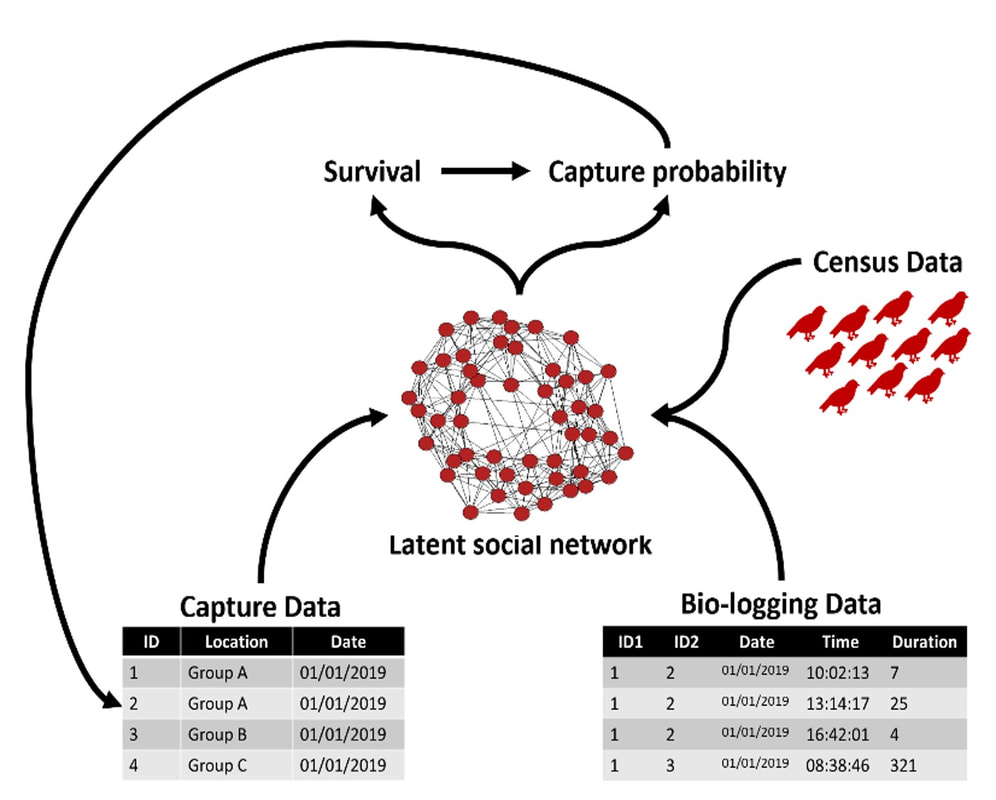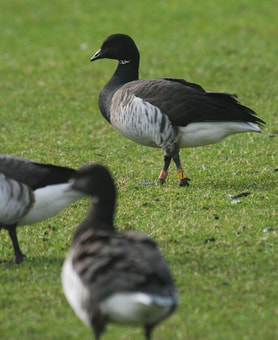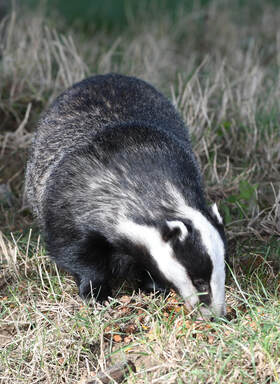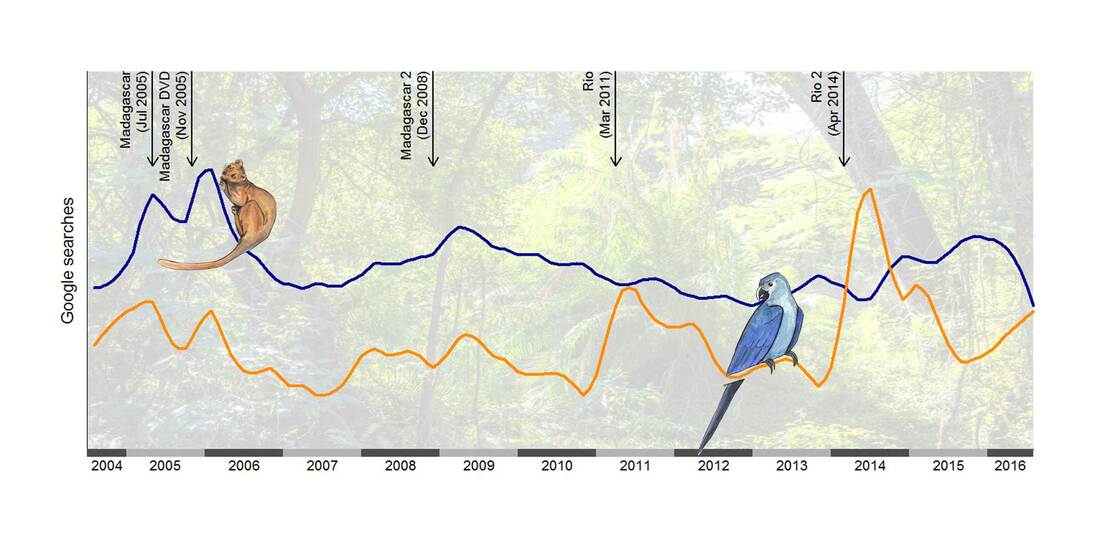My research uses quantitative approaches to study the social structure and dynamics of wildlife populations and their implications for infectious disease dynamics
I have recently started as a PI at the University of Edinburgh funded by a Royal Society University Research Fellowship. My fellowship research asks how the social structure and dynamics of host populations shapes their maintenance potential - that is their ability to act as reservoirs of infectious diseases that might spill over into humans, livestock or other species. More generally, my research works on a range of research questions at the interface of behavioural and disease ecology. We are interested in explaining the variation in social structures found in animal populations and understanding their consequences for ecological and evolutionary processes.
|
In my previous position as a MSCA postdoctoral research fellow in Montpellier I worked with Olivier Gimenez to integrate social network models with conventional capture-recapture models used widely in demographic studies of animal populations. This work is ongoing. If we can get our approach working it will be a big step forward in linking the social structure and dynamics of wildlife populations to population dynamics.
|
|
I did my PhD research supervised by Stuart Bearhop studying the causes and consequences of social structure in non-breeding, staging populations of light-bellied brent geese (Branta bernicla hrota) in Ireland and Iceland.
I then did two postsdocs at the University of Exeter. The first was with Robbie McDonald examining how the social structure of European badger populations impacts bovine tuberculosis epidemiology in the UK. Bovine TB is an important agricultural disease in the UK and badgers represent a primary wildlife reservoir of infection. The second was with Dave Hodgson on varied quantitative projects, focussed on understanding how the demography, life history and sociality of hosts can influence infectious disease dynamics. Prior to moving to Montpellier I spent some time working remotely in the lab of Nina Fefferman at the University of Tennessee. Nina and I worked together on various projects encompassing network epidemiology and knowledge exchange in social groups. |
I have used my quantitative skills to contribute to diverse research in ecology, epidemiology and animal behaviour. Current major research themes include:
Epidemiology and disease ecology
I am interested in explaining the role of host behaviour, demography and life-history influences infectious disease dynamics. In particular my interest in how social behaviour influences endemic persistence of infectious disease. Because the social structure of populations is linked to both population dynamics and key axes of life-history variation, its role in disease maintenance can be complex and multifaceted. My research increasingly combines theoretical models with empirical data analysis to understand how social behaviour influences the maintenance potential of host populations
As well as my postdoc work on European badgers and bovine tuberculosis, I have contributed a variety of studies studying wild host-parasite systems including using network modelling of infection in domestic dogs in Chad and southern resident killer whales in North America. I have also helped employ network analysis to study the implications of livestock movement networks for disease.
A particularly interesting trade-off for social animals is balancing the risk of infection with the gathering of information. Together with Julian Evans, Neeltje Boogert and Dave Hodgson I reviewed how animal social systems might be structured to mediate this trade-off. We are now conducting modelling work to test how this trade-off might shape the evolution of animal social networks. Our first published model looks at how modular social structures in animal populations might affect the spread of behaviours and pathogen spread in different ways, especially when group sizes are small.
Recently I have used my interest in the role of social contagions in the spread of infectious disease to contribute (alongside experts in public health and human behaviour) to research modelling how social and individual learning impacts the effectiveness of mitigation against the COVID-19 pandemic. We have now published multiple outputs using these models but a great introduction can be found here.
I am interested in explaining the role of host behaviour, demography and life-history influences infectious disease dynamics. In particular my interest in how social behaviour influences endemic persistence of infectious disease. Because the social structure of populations is linked to both population dynamics and key axes of life-history variation, its role in disease maintenance can be complex and multifaceted. My research increasingly combines theoretical models with empirical data analysis to understand how social behaviour influences the maintenance potential of host populations
As well as my postdoc work on European badgers and bovine tuberculosis, I have contributed a variety of studies studying wild host-parasite systems including using network modelling of infection in domestic dogs in Chad and southern resident killer whales in North America. I have also helped employ network analysis to study the implications of livestock movement networks for disease.
A particularly interesting trade-off for social animals is balancing the risk of infection with the gathering of information. Together with Julian Evans, Neeltje Boogert and Dave Hodgson I reviewed how animal social systems might be structured to mediate this trade-off. We are now conducting modelling work to test how this trade-off might shape the evolution of animal social networks. Our first published model looks at how modular social structures in animal populations might affect the spread of behaviours and pathogen spread in different ways, especially when group sizes are small.
Recently I have used my interest in the role of social contagions in the spread of infectious disease to contribute (alongside experts in public health and human behaviour) to research modelling how social and individual learning impacts the effectiveness of mitigation against the COVID-19 pandemic. We have now published multiple outputs using these models but a great introduction can be found here.
Animal Social Networks
Much of my research applies social network methods to study animal social behaviour. I employ a variety of statistical and agent-based modelling approaches to understand the causes and consequences of social structure and dynamics. In addition to applying these approaches to study wildlife disease, I have also used them in other contexts such as my work examining the dominance networks of free-living dogs and in relating social structure and dynamics to anthropogenic disturbance.
I am interested in improving and diversifying social network methods for ecology. I have recently developed multiple R packages related to the integration of social network and capture-mark-recapture approaches.
I am particularly interested in the application of cross-disciplinary network approaches to study animal social networks and have written papers reviewing the use of exponential random graph models and stochastic actor-oriented models to animal behaviour data. I have also been involved in an overview of using statistical network models for hypothesis testing in wildlife epidemiology. Key external collaborators with this work include David Fisher and Amiyaal Ilany. Together with Kelly Finn, Mason Porter and Noa Pinter-Wollman I have also explored the possibilities in applying multilayer network analysis to study animal behaviour, as well applying these approaches in my own empirical research. I have also contributed to a review outlining how multilayer networks can be used in veterinary epidemiology, in collaboration with Kim Vanderwaal, Amy Kinsley and Gianluigi Rossi.
I have also been involved in various projects examining statistical inference in animal social networks. Key collaborators in this work include Michael Weiss, Dan Franks, Julian Evans and David Fisher. In 2019 I participated in a NIMBIOS working group at the University of Tennessee on the topic of null models in animal social behaviour.
Much of my research applies social network methods to study animal social behaviour. I employ a variety of statistical and agent-based modelling approaches to understand the causes and consequences of social structure and dynamics. In addition to applying these approaches to study wildlife disease, I have also used them in other contexts such as my work examining the dominance networks of free-living dogs and in relating social structure and dynamics to anthropogenic disturbance.
I am interested in improving and diversifying social network methods for ecology. I have recently developed multiple R packages related to the integration of social network and capture-mark-recapture approaches.
I am particularly interested in the application of cross-disciplinary network approaches to study animal social networks and have written papers reviewing the use of exponential random graph models and stochastic actor-oriented models to animal behaviour data. I have also been involved in an overview of using statistical network models for hypothesis testing in wildlife epidemiology. Key external collaborators with this work include David Fisher and Amiyaal Ilany. Together with Kelly Finn, Mason Porter and Noa Pinter-Wollman I have also explored the possibilities in applying multilayer network analysis to study animal behaviour, as well applying these approaches in my own empirical research. I have also contributed to a review outlining how multilayer networks can be used in veterinary epidemiology, in collaboration with Kim Vanderwaal, Amy Kinsley and Gianluigi Rossi.
I have also been involved in various projects examining statistical inference in animal social networks. Key collaborators in this work include Michael Weiss, Dan Franks, Julian Evans and David Fisher. In 2019 I participated in a NIMBIOS working group at the University of Tennessee on the topic of null models in animal social behaviour.
Visual media and human-nature interactions
Inspired a trip to cinema to watch the live-action remake of the Jungle Book, together with Sarah Crowley, Anna Woodhead and Ana Nuno I wrote a Conservation Biology paper discussing the potential positive and negative effects of the movie industry for conservation. You can read media articles about this work on the Wildlife Society, Le Figaro and Deutsche Welle websites.
Sarah and I have continued this research interest and organised a special issue on the topic of visual media and human-nature relationships in the BES journal People and Nature. We also pursue our own research on the topic whenever we get a chance too.
Inspired a trip to cinema to watch the live-action remake of the Jungle Book, together with Sarah Crowley, Anna Woodhead and Ana Nuno I wrote a Conservation Biology paper discussing the potential positive and negative effects of the movie industry for conservation. You can read media articles about this work on the Wildlife Society, Le Figaro and Deutsche Welle websites.
Sarah and I have continued this research interest and organised a special issue on the topic of visual media and human-nature relationships in the BES journal People and Nature. We also pursue our own research on the topic whenever we get a chance too.





